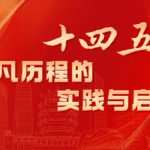The land of Jingchu boasts a long history and profound cultural heritage, with numerous idioms and allusions. These idioms serve as mirrors reflecting the unique charm and profound depth of Jingchu culture.
Recently, the book «Following Idioms to Discover Jingchu Treasures» has been officially published. This book uses idioms as unique cultural symbols to guide readers into the treasure house of Jingchu culture and explore those cultural relics hidden by time.
Linguistic Essence and Cultural Treasures Complement Each Other
Hubei, this ancient and magical land, has nurtured countless well-known idioms. Statistics show that there are over five hundred idioms related to the Jingchu region. From «blazing the trail» describing arduous beginnings to «turning weapons into plowshares» embodying peace concepts; from «keeping the casket and giving back the pearls» mocking misplaced priorities to «mistaking the reflection of a bow in the cup for a snake» satirizing excessive suspicion — these idioms have endured for millennia, still circulating in people’s conversations with enduring vitality. As the essence of language, idioms contain rich historical and cultural connotations and profound life philosophies, offering important enlightenment through both positive inspiration and negative warnings. Meanwhile, from human evolution sites dating back millions of years to the tremendous changes in modern society, the ancestors of Jingchu created abundant material wealth on this land, leaving behind countless cultural relics. These precious idioms and cultural artifacts shine like brilliant pearls embedded in the land of Jingchu, illuminating each other.
The preface eloquently states: «Understanding both Jingchu culture and Chinese civilization requires transmitted texts and archaeological discoveries. Idioms, as the essence of transmitted texts, carry historical memories; while cultural relics, as treasures of archaeological discoveries, embody cultural essence. Together they witness historical changes and civilizational evolution, and when they intersect, they inevitably spark brilliant insights.»
This book carefully selects 50 familiar idioms from numerous options and matches them with over a hundred exquisite cultural relics that complement and enhance each other. This approach not only visually demonstrates the richness of Jingchu culture but also confirms its important position in Chinese civilization history. Through the dual perspectives of cultural relics and idioms, readers can glimpse the unique charm of Jingchu culture and appreciate the profound depth of Chinese civilization.
A Beneficial Attempt to «Make Cultural Relics Shine with New Brilliance»
The idiom «blazing the trail» born in the Chu region — what historical connection does it have with the State of Chu? This book selects a Western Zhou bronze ding unearthed from Tomb No. 2 at Yejiashan in Suizhou, Hubei, comparing bronze inscriptions with historical records to let the artifact «speak» about the hardships during Chu’s founding — the Chu monarch held a low noble rank initially, only a viscount, excluded from formal ceremonies during royal gatherings and relegated to guarding sacrificial fires, suffering much neglect.
Bronze Ding, Western Zhou, Hubei Provincial Museum
The interpretation of cultural relics’ value doesn’t stop there. Through in-depth interviews with authoritative experts on Chu culture, the extended reading sections vividly recount how Xiong Yi, the founding monarch of Chu, endured humiliation while driving simple firewood carts and wearing ragged clothes to lead his people in reclaiming wasteland and farming diligently in the Jing Mountains. It also traces Chu’s development from a territory of less than a hundred li to «five thousand li of land,» creating a highly developed and uniquely styled regional culture. The enduring idiom «blazing the trail» and the cultural treasures preserved in the Chu region serve as powerful witnesses spanning millennia.
Painted Se, Early Warring States Period, Hubei Provincial Museum
Throughout this book, familiar idioms like «blazing the trail» paired with star cultural artifacts abound everywhere — the Tiger Stand Bird Frame Drum represents the aesthetic pinnacle of Chu culture, with its long-legged, high-headed phoenix birds singing triumphantly, evoking the Chu-born idiom «amazing the world with a single brilliant feat»; the simultaneous discovery of guqin and guse in the Marquis Yi of Zeng’s tomb, with decades of restoration research allowing us to hear the ancient harmony of «perfect harmony» today; Hubei’s only excavated gong-type bronze vessel serves as the perfect representation of «wine cups and mora chips lying about in disorder» described by Ouyang Xiu.
Animal Mask Pattern Gong, Early Western Zhou, Suizhou Museum
Currently, while publications about Chu idiom stories, Hubei idiom stories, and Hubei cultural relic introductions exist in the market, books that combine Jingchu cultural relics with idiom interpretations remain extremely rare. «Making cultural relics radiate new vitality and shine with new brilliance» — this book represents a beneficial attempt in this regard. Simult





